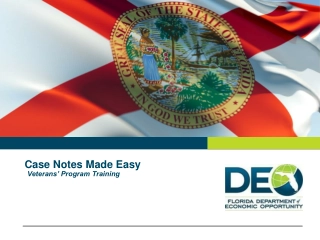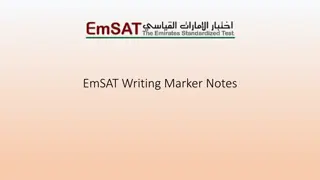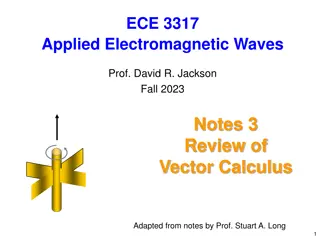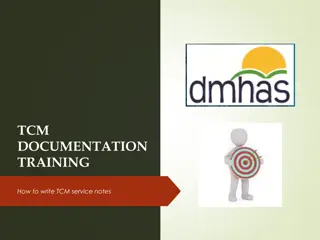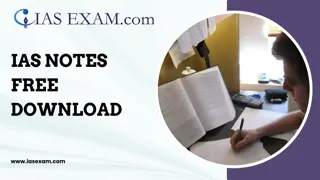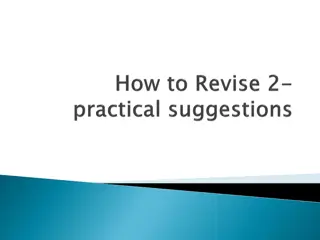
Significance of Electromagnetic Waves in Electrical Engineering
Delve into the fundamental importance of electromagnetic waves in the realm of electrical sciences and engineering. Explore applications, course themes, and specialized areas that rely on an understanding of electromagnetic phenomena. Prepare for a comprehensive journey through the world of waves and fields.
Download Presentation

Please find below an Image/Link to download the presentation.
The content on the website is provided AS IS for your information and personal use only. It may not be sold, licensed, or shared on other websites without obtaining consent from the author. If you encounter any issues during the download, it is possible that the publisher has removed the file from their server.
You are allowed to download the files provided on this website for personal or commercial use, subject to the condition that they are used lawfully. All files are the property of their respective owners.
The content on the website is provided AS IS for your information and personal use only. It may not be sold, licensed, or shared on other websites without obtaining consent from the author.
E N D
Presentation Transcript
ECE 3317 Applied Electromagnetic Waves Prof. David R. Jackson Fall 2024 Notes 1 Introduction 180px-PAVE_PAWS_Radar_Clear_AFS_Alaska Adapted from notes by Prof. Stuart A. Long 1
Why study electromagnetic waves? Motivation: Most basic of all ECE courses: Electromagnetics provides the foundation for all electrical sciences and engineering. All of circuit theory and power engineering is a special case (low frequency, where dimensions are small relative to a wavelength). Electromagnetics explains physical phenomena: What is light? How do electric and magnetic fields behave? Important to know about EM: It is extremely important for areas such as wireless communications, microwave engineering, and RF design. It is also very important for power engineering and micro/nano-electronics. It is good to know for all areas of ECE. 2
Applications Antennas Radar Blma%2520NS-600 180px-PAVE_PAWS_Radar_Clear_AFS_Alaska RF circuits Wireless Communications RFID RFID2 3
Applications (cont.) Computer and Electronic Applications: At higher frequencies transmission line effects become more important. It becomes necessary to model the electromagnetic performance of the system (simple circuit theory is no longer adequate). Electromagnetic Compatibility (EMC) and Electromagnetic Interference (EMI) also become important at high frequency due to radiation and coupling effects. 4
Course Theme In ECE 3318, you become familiar with static fields. (The methods learned there are accurate for power frequencies.) You also become familiar with vector calculus. In ECE 3317, we will deal with time-varying fields. More specialized courses (these require ECE 3317): ECE 5317: Microwave Engineering Prereq: ECE 3317. Transmission lines, waveguides, microstrip circuits, microwave circuit theory, scattering matrices, impedance transformers, resonators, and filters. ECE 5318: Antenna Engineering Prereq: ECE 3317. Antenna concepts, linear wire antennas, linear arrays, aperture and horn antennas, microstrip antennas, dielectric resonator antennas, frequency- independent antennas, and measurement techniques. 5
Course Theme (cont.) ECE 3317, ECE 5317, ECE 5318 High Frequency A microwave integrated circuit. A cell-phone base-station antenna. A microwave filter constructed from microstrip. A microstrip antenna array. 6
Course Theme (cont.) ECE 3318 A transformer in a substation. Power buses in a substation. http://upload.wikimedia.org/wikipedia/commons/thumb/c/cd/Delta_pylon_near_Madrid.jpg/225px-Delta_pylon_near_Madrid.jpg Low Frequency Overhead high-voltage power lines Large AC generators at Hoover Dam. 7
Homework Homework is normally assigned once per week. It is due at the beginning of class on the due date (submitted in class). Homework will be distributed via the class Canvas site. Please staple it, fold it (vertically), and write on the outside the following: the class number (ECE 3317), the name of instructor (Prof. Jackson), and the homework assignment number (e.g., HW 1). No late homework is accepted. 8
Announcements All important announcements will be placed on the class Canvas site in the Announcements section. It is your responsibility to check this often. Sometimes emails will be sent to the class, so it is your responsibility to make sure that your university email is working properly (and forwarded properly, if appropriate). 9
Announcements (cont.) Please read the syllabus carefully! You are responsible for everything on it! (It is on the Canvas site.) Please read the UH Academic Honesty Policy in the online version of the UH Student Handbook (the website is in the syllabus). Fill out the Academic Honesty and Syllabus Form, sign it, and return it by the deadline indicated (Aug. 29, 2024) or else you may be dropped. The form is on the Canvas site. 10
Announcements (cont.) Class attendance is required Class attendance will be taken. If you have three unexcused absences, your grade at the end of the semester may be lowered. To have an absence excused, you must get permission from the instructor before class begins. 11
Class Notes The class notes are on the class Canvas website (both pptx and pdf versions). If you have trouble reading the equations in the pptx version, you are most likely having a font problem due to missing MathType fonts or the Handscript SF font (used to represent time-domain vector fields). Here is what you can do: Use the pdf version of the class notes. Install MathType (see next slide). Download the Handscript SF font (placed on Canvas site under Handouts ). 12
MathType In order to obtain a free license, please fill out and submit the form that is found at the link below: https://forms.office.com/r/sd0agNuawV 13
MathType For more information about MathType, please see: https://www.egr.uh.edu/sites/ccoe.egr.uh.edu/files/files/mathtype_for_making_and_managing_equations.pdf 14
Reading Assignments Reading assignments are posted on the Canvas site from the recommended text. Please follow along with the class notes and read the corresponding sections in the book. Ideally, it would be good to read the appropriate sections in the book before and after seeing the lecture. 15




